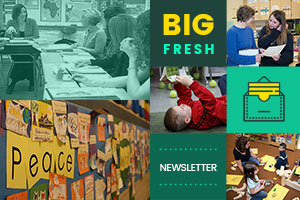You just can’t beat the person who never gives up.
—Babe Ruth
The Power of Just
I wandered up to the bonus room and was excited to see Charlie, my husband, working on the final coat of paint on the last wall. The room was noticeably brighter and warmer. It felt cleaned up and fresh. “Wow,” I said, “it looks so good!”
“Do you like it?” he asked. We agreed that it was exciting to have this task wrapped up and marveled at how quickly he’d gotten it done. “I just have to finish this wall, then the stairwell, and the last two rooms,” he said. We looked at each other and broke into a fit of giggles.
Just is a joke between Charlie and me. Our last house was a series of home improvement projects that we could never get ahead of: We were raising four small children and both of us were working full-time, so time and money were a constant challenge. As we finished each small step, Charlie would outline what needed to be done next with just. After gutting a bathroom he would say, “We just need to get plumbing and electrical taken care of, choose the tile, rent the tile cutter, get it tiled, pick out some cupboards, features, and so on….then put it back together.”
Or after building a brick retaining wall out back, he said, “We just need to purchase and move 72 units of dirt, install a sprinkler system, and research, choose, and plant trees and plants.”
Somehow, starting the plan with just in front made it seem like the end was in sight, but really, the next steps were just as big as, or bigger than, the task we’d just finished. But just gave us hope and laid out some steps forward.
Somewhere along the way we noticed what we were doing with just and started laughing at ourselves, knowing that that just didn’t necessarily mean we were anywhere close to done with the project. Nevertheless, just became our equivalent of yet. It inspired a growth mindset and kept us tackling projects step-by-step. Our new house has fewer projects, but just is still part of our vernacular and it never stops giving us a laugh.
Just works in teaching too…A student learning to read just needs to learn their letter sounds, then blend the sounds together to make some words. Or a writer just needs to get some labels on the page and eventually a few words to build a sentence. Teachers who are starting a new program or new grade level just need to do a few assessments, score them and prepare the next lesson. Just gives me an idea of what’s next in a way that isn’t overwhelming but rather is a lower-stakes approach to progressing step-by-step.
As we begin a new school year, many of us are facing new curricular changes and can apply the power of just. This week’s contributors share approaches and mindsets they are applying as they accept the expectations of a structured literacy program—plus more as always.
Bitsy Parks
First-Grade Teacher
Portland, Oregon


Dana Murphy guides reading specialists in setting up intervention rooms to welcome readers.
Stella Villalba shares three strategies teachers and literacy coaches can use to pause, re-center, and renew themselves throughout busy, stressful days in schools.
Katherine Sokolowski explores the challenges and joys of co-teaching with special education colleagues.

New members-only content is added each week to the Choice Literacy website. If you’re not yet a member, click here to explore membership options.
Hannah Tills offers a much-needed metaphor for all teachers who are implementing a new curriculum resource. Rather than thinking of the new expectations as part of a pendulum, Hannah encourages us to think of walking a tightrope. Hannah offers ways to stay rooted in student engagement, student access, student choice, and teacher autonomy while also meeting expectations of a newly adopted curriculum program.
Gwen Blumberg is inspired by a challenging roller derby practice and sees parallels for teachers who are facing challenging situations with changes to literacy curriculums. If something is shifting in your life, this article is sure to offer you confidence in moving forward.
VIDEO | Mandy Robek shares the thoughtful ways she pairs math manipulatives and books while providing easy access to the tools for students. She also promotes engineering and design with access to building blocks and parts.
Literature gives students a safe space to learn about struggle, resilience, and emotional growth without requiring personal vulnerability. Gretchen Schroeder offers a way to focus students’ independent reading to explore coping with challenges and change in life. You won’t want to miss the included Young Adult booklist. This is the second installment of a series.

New members-only content is added each week to the Choice Literacy website. If you’re not yet a member, click here to explore membership options.
To survive and thrive as an educator, it’s essential to be able to work with and work through change of all kinds. Julie Cox offers tried and true suggestions for any leader who is facing challenges and changes.
Mandy Robek has curated a thoughtful list of professional math resources for those who want to apply wise instructional practices to any curriculum or grade level. This list uplifts ways to understand or analyze students’ thinking and value their strategies for solving problems. Mandy includes both professional texts and podcasts.
Inspired by low-ceiling, high-threshold activities in classrooms, Heather Fisher offers three ways to plan professional learning so that it is accessible to a range of educators.
Quote It:
When it is dark enough, you can see the stars.
—Ralph Waldo Emerson
That’s all for this week!



